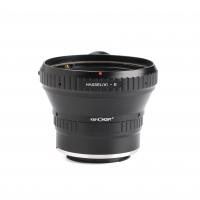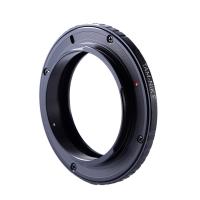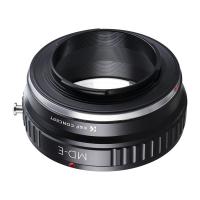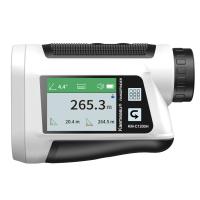How To Fix Lines On Digital Camera ?
If your digital camera is displaying lines on the screen or in the photos, it could be due to a few different reasons. One common cause is a damaged or dirty sensor, which can be fixed by cleaning it with a soft cloth or taking it to a professional for repair. Another possibility is a problem with the camera's memory card, which can be resolved by formatting the card or replacing it with a new one. Additionally, lines may appear if the camera's firmware is outdated, so updating the firmware may solve the issue. Finally, if none of these solutions work, it may be a hardware issue that requires professional repair or replacement of the camera.
1、 Clean the lens and sensor

How to fix lines on digital camera? One of the most common causes of lines on digital camera images is a dirty lens or sensor. To fix this issue, the first step is to clean the lens and sensor. Use a microfiber cloth or lens cleaning solution to gently wipe the lens and sensor. Be careful not to scratch the lens or sensor while cleaning.
Another way to fix lines on digital camera images is to adjust the camera settings. Sometimes, the lines may be caused by incorrect camera settings such as ISO, shutter speed, or aperture. Adjusting these settings can help to eliminate the lines and improve the overall image quality.
If cleaning the lens and sensor and adjusting the camera settings do not fix the lines on digital camera images, it may be a hardware issue. In this case, it is best to take the camera to a professional for repair or replacement.
It is important to note that lines on digital camera images can also be caused by a malfunctioning sensor or other internal hardware issues. In some cases, these issues may require more extensive repairs or replacement of the camera. Therefore, it is always a good idea to take proper care of your camera and seek professional help if necessary.
2、 Check for firmware updates

How to fix lines on digital camera? One of the first things you should do is check for firmware updates. Firmware is the software that controls the camera's hardware, and updates can fix bugs and improve performance. If your camera has a firmware update available, it may address the issue of lines appearing in your photos.
To check for firmware updates, visit the manufacturer's website and search for your camera model. Look for a section on firmware updates or downloads. Follow the instructions carefully to download and install the update onto your camera.
It's important to note that firmware updates can sometimes cause issues if not installed correctly, so be sure to read the instructions thoroughly and follow them exactly. Additionally, if your camera is still under warranty, it's best to contact the manufacturer or a professional repair service to avoid voiding the warranty.
In addition to firmware updates, there are other steps you can take to prevent lines from appearing in your photos. These include cleaning the camera lens, checking the camera settings, and avoiding extreme temperatures or humidity. If the issue persists, it may be a hardware problem that requires professional repair.
3、 Reset camera settings

How to fix lines on digital camera? One of the most common causes of lines on digital camera images is a problem with the camera's sensor. This can be caused by a number of factors, including damage to the sensor or a malfunctioning component. If this is the case, the best solution is to take the camera to a professional repair shop to have it fixed.
However, before taking the camera to a repair shop, there are a few things you can try to fix the problem yourself. One of the first things you should try is resetting the camera settings. This can often fix minor issues with the camera and may help to eliminate the lines on your images.
To reset the camera settings, you will need to consult your camera's user manual. The process for resetting the camera settings will vary depending on the make and model of your camera. In general, you will need to access the camera's menu system and look for an option to reset the settings to their default values.
It is important to note that resetting the camera settings will erase any custom settings you have configured on the camera. However, this is a small price to pay if it means eliminating the lines on your images.
In conclusion, if you are experiencing lines on your digital camera images, resetting the camera settings may be a simple solution to the problem. However, if the problem persists, it is best to take the camera to a professional repair shop to have it fixed.
4、 Adjust exposure and white balance

How to fix lines on digital camera? One of the most common causes of lines on digital camera images is incorrect exposure and white balance settings. To fix this issue, you can adjust the exposure and white balance settings on your camera.
Exposure refers to the amount of light that enters the camera sensor. If the exposure is too high, the image will be overexposed and if it is too low, the image will be underexposed. To adjust the exposure, you can use the exposure compensation feature on your camera. This feature allows you to increase or decrease the exposure by a certain amount.
White balance, on the other hand, refers to the color temperature of the light source. If the white balance is incorrect, the image will have a color cast. To adjust the white balance, you can use the white balance setting on your camera. This setting allows you to choose the appropriate white balance for the lighting conditions.
It is important to note that lines on digital camera images can also be caused by other factors such as a faulty sensor or lens. In such cases, it is best to seek professional help.
In the latest point of view, some cameras now have an automatic feature that adjusts the exposure and white balance settings based on the lighting conditions. This feature can be helpful in preventing lines on digital camera images. Additionally, some cameras also have a feature that allows you to preview the image before taking the shot, which can help you identify and fix any issues before capturing the image.




























